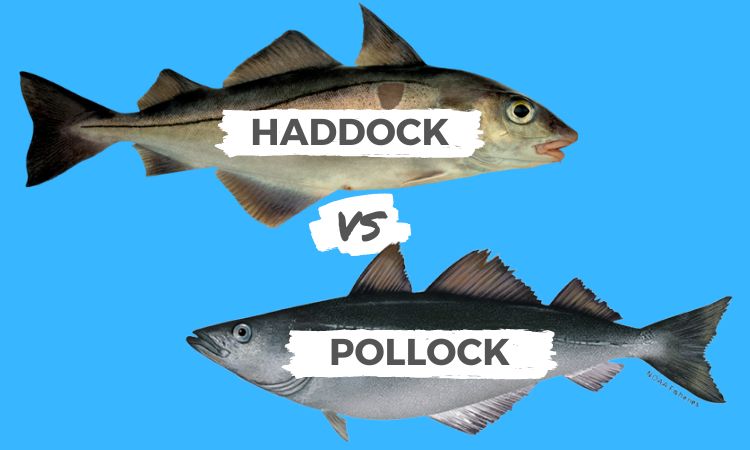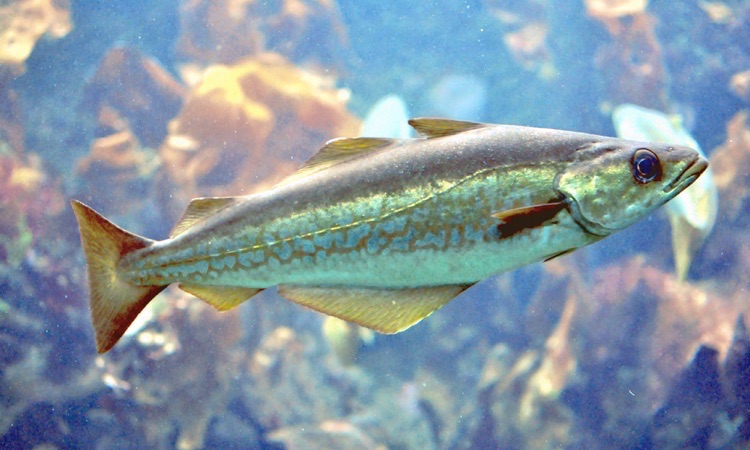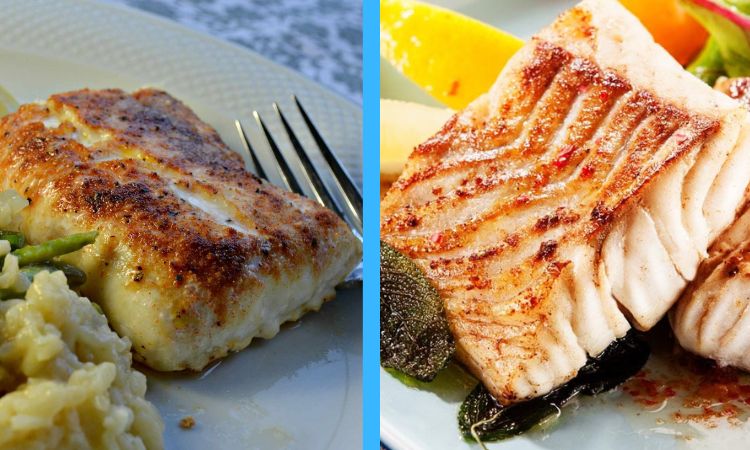Haddock vs pollock are two types of highly coveted whitefish species, both part of the true codfish family known as Gadidae. Commonly found worldwide, these fish have become increasingly popular for their succulent flavor and versatility in cooking.
Haddock is the only species of its genus, while pollock belongs to Gadus with three other cod species. These include Pacific cod, Atlantic cod and Greenland cod.
Despite their similarities, haddock and pollock are two distinctive fishes that have a number of distinguishing characteristics. In this article, we will take an in-depth look at both kinds of fish to uncover the distinctions between them.

Differences Between Haddock and Pollock
Don’t let the similarities between haddock and pollock deceive you. When it comes to size, appearance, habitat, range, taxonomy or conservation status these two fish species differ greatly. To avoid confusion it is important that we recognize their unique characteristics.
Haddock vs Pollock: Size
Haddock and pollock are two species that come in varied sizes. Generally, haddocks measure anywhere between 1 to 3 feet long and weigh 2-40 pounds on average; they grow quickly every year, doubling their size from 6.5 – 7.5 inches the first year onwards!
Pollock can reach an impressive length of up to 3 feet, but the average size tends to be 12–20 inches. Similarly, most specimens weigh between 1 and 3 pounds on average.
Pollock vs Haddock: Physical Features
Easily identify haddock vs pollock by the fish’s external characteristics. Both species of fish possess unique physical features that are immediately noticeable.
Haddocks are easily recognizable due to their defining black lateral line that runs along the white side of the fish. As well as a dark blotch just above its pectoral fin. This spot has earned itself several quirky names over the years such as “thumbprint,” “Devil’s thumbprint,” and even “St. Peter’s mark.”
The dorsal region of their body is a spectrum from dark grey-brown to nearly black, whilst the bottom side shines with a captivating dull silvery white hue.
Pollocks have the distinct physical characteristics of a greenish hue and white lateral line. Additionally, they are identifiable by their sharp anal spines, small chin barbel and paler ventral side compared to other fish species.

Haddock vs Pollock: Habitat
Haddock fish are mainly located in the Northern Atlantic Ocean and along coasts of Europe, North America, and western Atlantic. Rarely found anywhere else, these delightful creatures live primarily among saltwater bodies in the Eastern-most areas of this region.
Haddock have an expansive reach, stretching all the way from North Carolina’s coast to Canada. Unfortunately, as is the case with many other water-dwelling creatures, climate change has had a significant impact on their range distribution.
In the bracingly cold and immaculate waters of the northern Atlantic Ocean, pollocks can be found feasting on zooplankton. For six months after birth, these pelagic species live close to sea level or in gulfs – a testament to their hardy nature!
As pollock grow in size and age, their habitats become deeper. Younger pollock prefer intertidal zones while more mature ones inhabit the pelagic region of the Atlantic Ocean, at different depths.
Also Explore
Pollock vs Haddock: Range
Haddock and pollock are both deep-sea fish, typically found close to the seabed. The biggest haddock can live in depths of up to 260 feet; however, they have been known to survive at a remarkable 1,400 feet below the sea’s surface!
In contrast, more experienced pollocks tend to travel up to 1,000 feet below the water’s surface. Depending on their life stage and growth progress, they may roam in various parts of the ocean. On the other hand, younger pollock prefer shallower waters near rocks and seagrass for protection from potential predators.
Cooking
Like tilapia vs haddock, both haddock and pollock are two delectable species of fish that can be prepared in various ways, such as frying, grilling, baking, steaming or even broiling.
When preparing fish, make sure to take off the skin prior to cooking as it can become pallid. Daddock fillets and pollock are interchangeable in many recipes. However, bear in mind that pollock has a stronger taste than haddock so you may want to reduce the amount if you’re substituting one for another.

Haddock vs Pollock: Conservation
In 1996, the IUCN conducted an analysis on haddock and found that this renowned saltwater dweller was a vulnerable species. A decade later in October 2013, the same organization deemed pollock to be near-threatened after their assessment.
Due to the sheer number of predators they face, haddock and pollock populations have been steadily decreasing.


